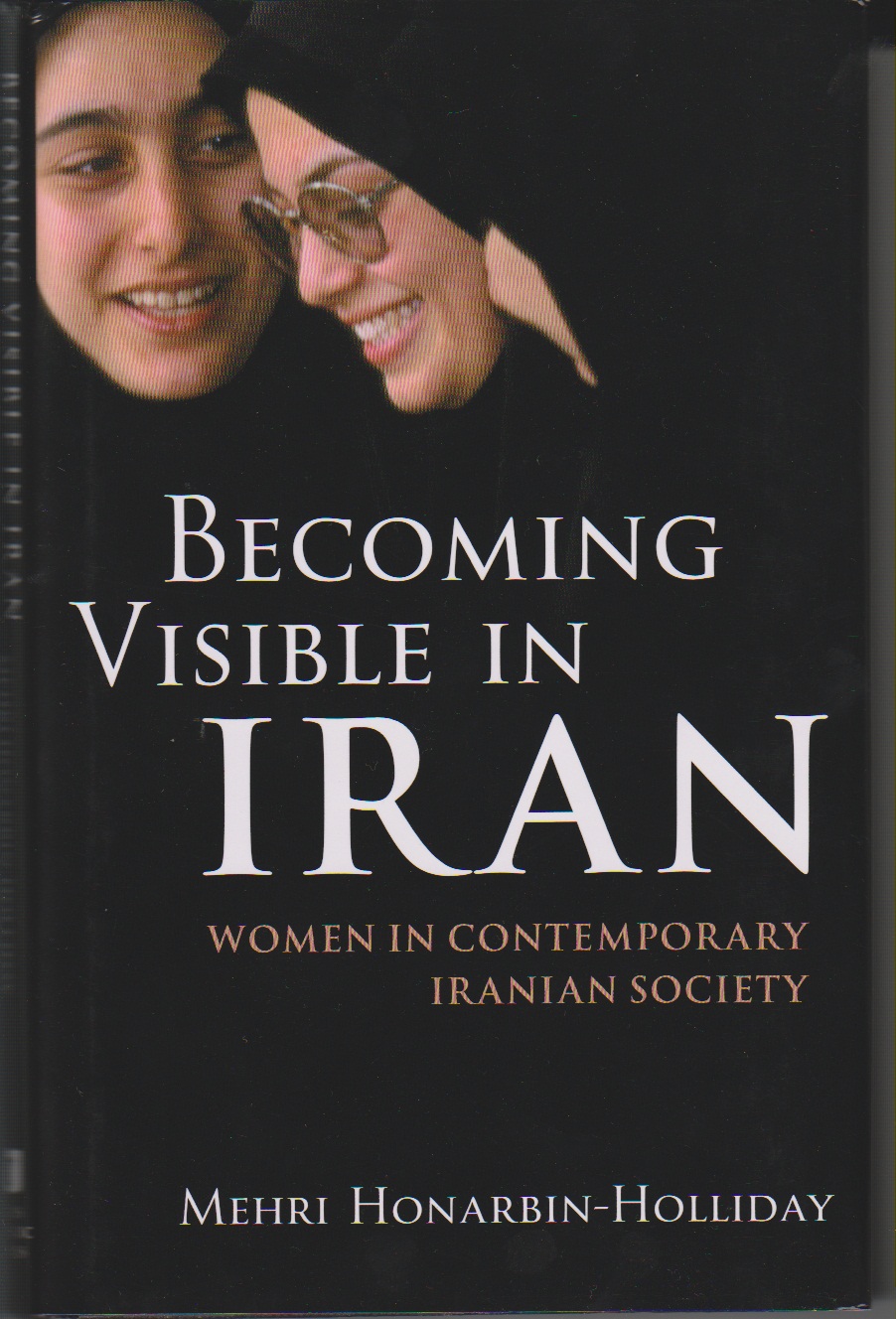Becoming Visible in Iran
 Mehri Honarbin-Holliday is author of Becoming visible in Iran, I B Tauris, 2008, paperback 2013
Mehri Honarbin-Holliday is author of Becoming visible in Iran, I B Tauris, 2008, paperback 2013
The state of women in Islamic societies is the subject of much interest and heated debate. Yet, these discussions and representations in the media and elsewhere rely on inadequate information and misperceptions, imagining Muslim women as oppressed victims in need of liberation by outside forces. Becoming Visible in Iran disputes these widespread stereotypes, providing a vivid account of women in contemporary Iran as they go about their daily lives.
“This book will make a fresh contribution to the field of Middle East women’s studies. It challenges prevailing stereotypes and misconceptions about Iranian women while providing an original and creative way of engaging with the material.”
Professor Nadje Al-Ali, The Centre for Gender Studies, School or Oriental and African Studies, University of London
“A unique contribution to knowledge … the reader is taken on a journey… We thus witness how the young women employ minds and bodies to articulate ideas and demand change at the family, legal and political levels. … I highly recommend this well-researched book for its demystification of the lives and autonomy of women in the Muslim world, as well as its accessibility as a good and informative read for the general public worldwide.”
Elaheh Rostami-Povey, Lecturer in Development Studies, School of Oriental and African Studies, University of London, Gender amp; Development 18/2: 360-2, 2010.
“The book as a whole gives a powerful sense of anticipation and of the collective ownership of broadened and shared horizons in the minds of Tehrani women. With profound integrity it illuminates Iranian women’s intellectual preoccupations and aspirations under the Islamic regime. It is tailored for a Western audience, providing background information for the events, stories, and women’s narratives.”
Mastoureh Fathi, University of East London, Journal of Middle East Women’s Studies 6/1: 129-31, 2010
“Her book provides invaluable glimpses into the lives of mostly young, and two older, Iranian women. The younger women in the book were all born after the 1979 revolution. Honarbin-Holliday describes and advocates women’s agency at the personal, societal, political, and not least cultural level. Education, and higher education’s role in particular, form the uniting basis on which ambitions, struggles, hopes, dreams and relentless efforts at clreating public spaces and identities are placed. Detailed accounts of crucial moments in the evolution of today’s Iran and the women’s narratives makes for an intricately woven fabric of life experience.”
Claudia Gillberg, School of Education amp; Communication, Jönköping University. Gender and Education 22/6: 703-4, 2010
